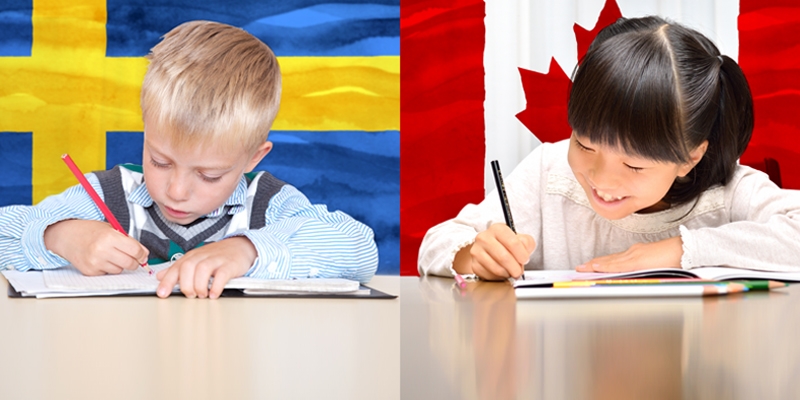Regulation and Funding of Independent Schools: Lessons from Sweden

As the share of students attending independent schools across Canada increases, the regulatory context of these non-government schools becomes increasingly relevant. Innovation, performance, and efficiency in this education sector can be enhanced by appropriate regulation and funding—or hindered by onerous or inappropriate regulation and funding—and thus other countries with long histories in independent schooling have lessons for Canada. Sweden’s experience is the focus of this paper.
Since Sweden embarked on its educational reforms in the early 1990s, its independent schooling sector developed and matured to the point where the share of students in Sweden enrolled in independent schools has increased significantly, rising from less than 2 percent in 1992 to 14.1 percent in primary and lower secondary grades and to 25.1 percent in the upper secondary grades in 2014.
Indeed, during this period education in Sweden was fundamentally transformed from one of the most centralized education systems in the OECD to one of the most decentralized. Funding was decentralized from the national to the municipal level, public school choice opportunities increased, and a national voucher system allowed for-profit and non-profit independent elementary and secondary schools to receive funding equivalent to 100 percent of the per-student allocation for average operating costs at local municipal schools.
Perhaps surprisingly, the most significant independent school enrolment growth occurred in the for-profit sector. In all, 64 percent of elementary and lower-secondary independent school students and 85 percent of upper-secondary independent school students attend for-profit schools. Thus, not only do independent schools in Sweden attract one in seven lower-grade students and one in four upper-secondary students in the country, but the vast majority of those students attend for-profit institutions.
For-profit independent schools tend to enrol, on average, more students from lower socioeconomic backgrounds compared with non-profit independent schools. Currently, the ten largest chains of for-profit schools enrol 36 percent of all independent school students.
The growth of independent schools has led to beneficial results. Research has indicated that the performance of independent school students, as well as the competitive presence of independent schools, has moderated, rather than exacerbated, the decline in Sweden’s student performance on international standardized tests.
Both for-profit and non-profit independent schools are heavily regulated in Sweden. Independent schools are required to follow the national curriculum, use progressive pedagogical approaches, meet instructional time requirements for each subject (at the elementary and lower-secondary level), hire certified teachers, and be regularly inspected by both national and municipal inspectorates, and they may not be selective in the students they enrol. Students must participate in national proficiency tests in grade 3, 6, and 9 (and additional ones in upper secondary school).
Countries like Canada have much to learn from Sweden’s experience. Lessons from Sweden include:
1. Parity of public funding
Sweden’s precedent of funding independent schools at 100 percent (of the allocation for per-pupil operating expenditure in local government schools) is worth consideration. Although buildings and other capital assets are not funded, and thus full funding of independent schools is not achieved, a more level playing field for the schools and the families that choose them is created.
2. Ownership neutrality
For-profit independent schools should not only be permitted, but they should also be eligible for funding equivalent to non-profit independent schools, as they have stronger economic incentives and opportunities to start new schools, scale up excellent schools, and crowd out poorer performing schools. Sweden’s experience with this practice is almost unique in the world and should be considered.
3. Output accountability
It is important to learn from the lack of good information and output accountability of student performance in the Swedish system. Publishing output measures in terms of academic achievement, especially if constructed to generate value-added measures at the school level, as well as measures of parent satisfaction, gives parents and inspectors better information and holds all schools accountable.
4. Avoid onerous curricula and input regulations
Restrictive requirements on inputs (as is the case in Sweden) for curricula, pedagogy, and teacher certification should be minimized. Independent schools need flexibility in the professionals they hire and the curriculum and approaches to teaching they use. This mitigates the monopoly on teacher certification and protects against having to adopt harmful practices across the jurisdiction.
5. A depoliticized approval process
Sweden’s practice of allowing local competitors a say in the approval process for new or expanding independent school applicants should not be mimicked. Provincial level registrations, accreditations, or approvals (or the equivalent) would ensure a more arm’s length approval process.
6. Selection practices and top-up fees
Although independent schools in Sweden may neither use selective practices when enrolling students nor charge top up fees, more research is needed to consider the potential benefits of these practices.
Author:
More from this study
Subscribe to the Fraser Institute
Get the latest news from the Fraser Institute on the latest research studies, news and events.


